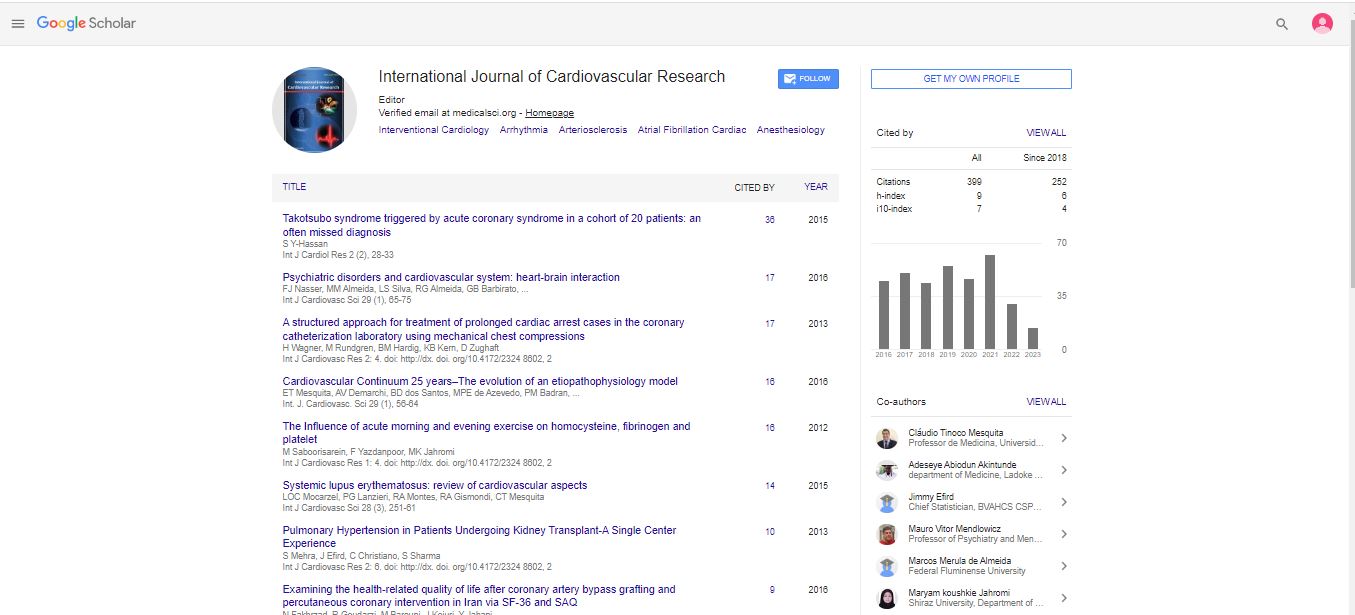Research Article, Int J Cardiovasc Res Vol: 4 Issue: 4
Utility of Routine Transthoracic Echocardiography in Hospitalized Syncope Patients Risk Stratified by EGSYS Score
| Ali Shafiq1,2, Hardik Bhansali2, Meredith Mahan3 and Karthik Ananthasubramaniam4* | |
| 1Department of Cardiology, Saint Luke’s Mid America Heart Institute, Kansas City, USA | |
| 2Department of Internal Medicine, Henry Ford Hospital, Detroit, USA | |
| 3Department of Public Health Sciences, Henry Ford Hospital, Detroit, USA | |
| 4Heart and Vascular Institute, Henry Ford Hospital, Detroit, USA | |
| Corresponding author : Karthik Ananthasubramaniam, MD Heart and Vascular Institute, Henry Ford Hospital, 2799 W Grand Blvd, Detroit, MI 48202, USA Tel: +3139164420; Fax: 313-916-8901 E-mail: kananth1@hfhs.org |
|
| Received: January 29, 2015 Accepted: April 06, 2015 Published: April 08, 2015 | |
| Citation: Shafiq A, Bhansali H, Mahan M, Ananthasubramaniam K (2015) Utility of Routine Transthoracic Echocardiography in Hospitalized Syncope Patients Risk Stratified by EGSYS Score. J Cardiovasc Res 4:4. doi:10.4172/2324-8602.1000215 |
Abstract
Utility of Routine Transthoracic Echocardiography in Hospitalized Syncope Patients Risk Stratified by EGSYS Score
Background: The yield of routine transthoracic echocardiography (TTE) in the diagnosis and risk stratification of syncope has been a subject of debate. Purpose and Methods: To compare the yield of TTE in different risk categories of syncope patients, we performed a retrospective study of patients who had a TTE with an admission diagnosis of syncope. The patients were then stratified into low and high risk categories based on their Evaluation of Guidelines in Syncope Study (EGSYS) score of <3 and >3, respectively. Three downstream health resources were evaluated: cardiology consultation, further testing and therapeutic interventions after TTE was done. Results: Of the study group, 65% (295/456) of patients were found to have utilized no downstream health resources. The remaining 35% (161/456) had at least used 1 resource; 29.2% (133/456) utilized 1, 5% (23/456) utilized 2 and 1.1% (5/456) utilized all 3 of these resources. Of the total study group, 51% (233/456) were low risk for cardiac syncope according to the EGSYS score. Only 23.2% (54/233) of these low risk patients utilized 1 or more of the downstream health resources, but no patients in this group needed any cardiac intervention. Conclusion: There was a significant difference of the yield and thus incremental value of TTE between high and low risk group categories based on the EGSYS score. A low EGSYS score seems to be a good initial tool in identifying patients who likely will not require additional interventions related to further downstream testing.




